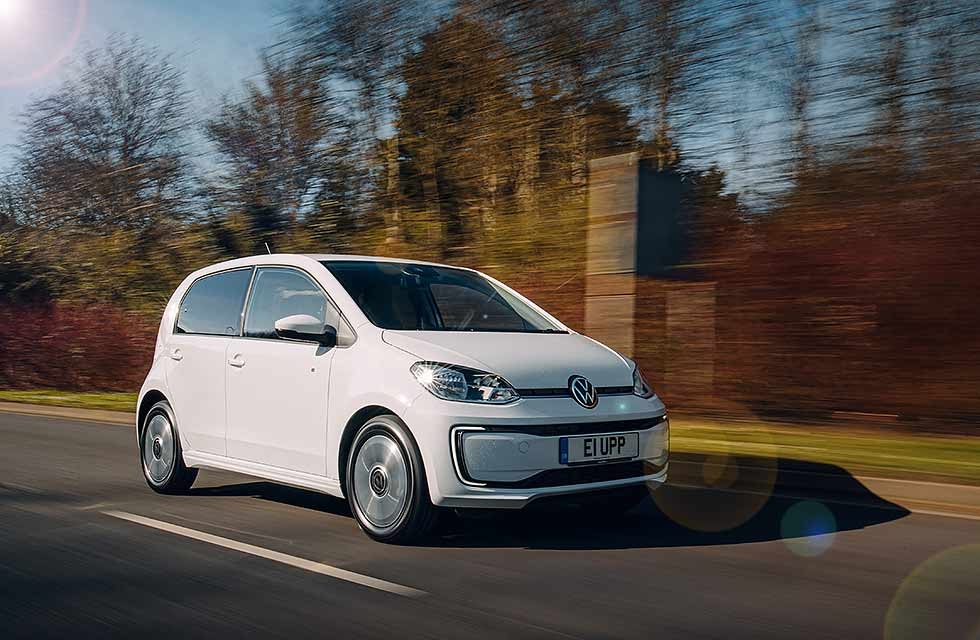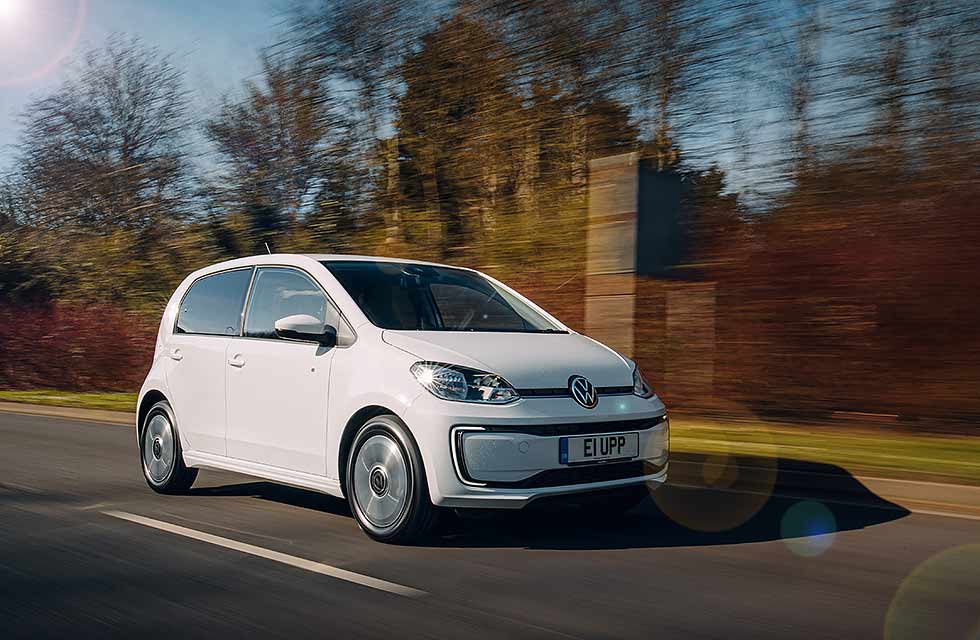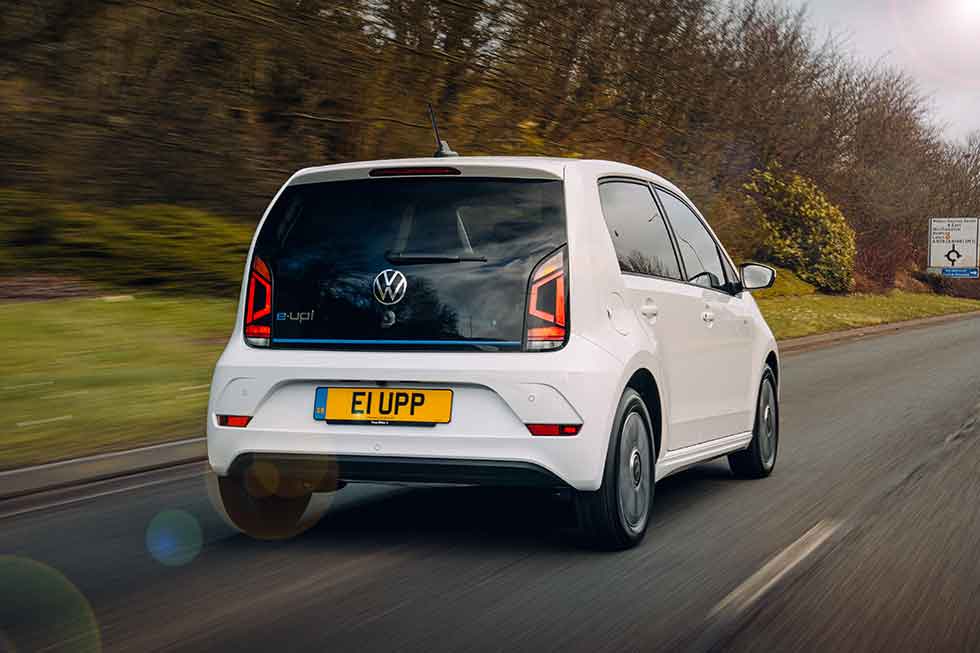
Now with double the range, is the e-up! the city EV you’ve been waiting for? Jonathan Musk finds out.
Volkswagen reckons only 5% of up! orders will be for the electric variant, with sales hindered by a lack of supply. Nonetheless, the German brand has refreshed its electric city car for 2020. But only slightly. Aside from very minor cosmetic changes, what’s really new is the car’s powertrain. The old car suffered from a distinct lack of power and range, which restricted its appeal to a select few customers and also made it appear expensive against competition, such as the Renault ZOE. Volkswagen has largely addressed this issue by installing an e-Golf-sourced 36.8kWh (32.3kWh usable) battery into the tiny city car. This increases range to 159 miles (WLTP) compared to the old car’s 83 miles range from its 18.7kWh battery. Interestingly, the new battery is smaller in volume and only 15 kilograms heavier.

You may find yourself experiencing a bit of deja vu, as the e-up! is essentially the same car as the Skoda CITIGOe iV reviewed in Drive-My – and also the same as the SEAT Mii Electric. Only a few key differences set them apart, with the Skoda managing a slightly higher claimed range of 170 miles but most pertinently, it is priced a whopping £2,740 less than the e-up!. The main reason being that the base-level Skoda is not equipped with CCS rapid charging, unlike the e-up!.. The Volkswagen’s case is not helped either by increasingly tough small competition from the likes of MINI and Honda, nor the fact it’s nearly £8,000 more than the base-level petrol-powered up! and £4,000 than the last-of-its-kind up! GTI hot hatch.

All that may be true, but the e-up! still makes a case for itself with ultra-low running costs – roughly £5.29 for a full charge (at 14.4pence/unit) – zero tax, affordable finance at less than £300/month and zero BiK for company car buyers.
The car can be charged at up to 40kW using a CCS rapid charger, which takes an hour to go from nought to 80%, or four hours at 7.2kW when using a home, work or public charge-point. Volkswagen formed a partnership with Tesco and Pod Point to install 2,400 chargers around the country too, which offer free-of-charge electricity to shoppers.
Standard kit has improved over the old model too, including climate control, cruise control, and Lane Assist – that you’ll want to turn off – and heated front seats, which you’ll want to turn on. In addition, you get front and rear parking sensors and a reversing camera (that shows up in the world’s smallest display, see photo above). Crossed off the equipment list, however, is Autonomous Emergency Braking (AEB) which sees the e-up! drop to 3/5 stars in the Euro NCAP crash test scores.
Despite having the same motor as before and the steering being too light, the car feels sprightlier, which makes for an enjoyable torque-driven experience. So much so, that its official range quickly takes a tumble to around 135 miles in favourable conditions. However, five modes of regen (as offered on the e-Golf) and an Eco/Eco+ button offer the chance to claw back some range and enhance its drivability.
What we think
Attractive competition make the e-up! a tough choice, but its compact city car size, improved range, fun drive and compelling running and purchase costs make it worthy of consideration.
Specification
Drive: FWD
Max Power: 82bhp
Max Torque 210Nm
Battery: 36.8kWh Li-ion
Range: 159 miles
Efficiency: 4.27mi/kWh
Charging: 1-12.37hr
Max speed: 81mph
0-62mph: 11.9s
Price: £23,195 (ex PICG)






